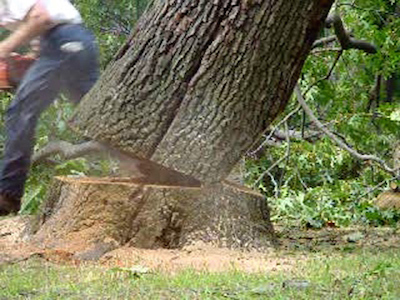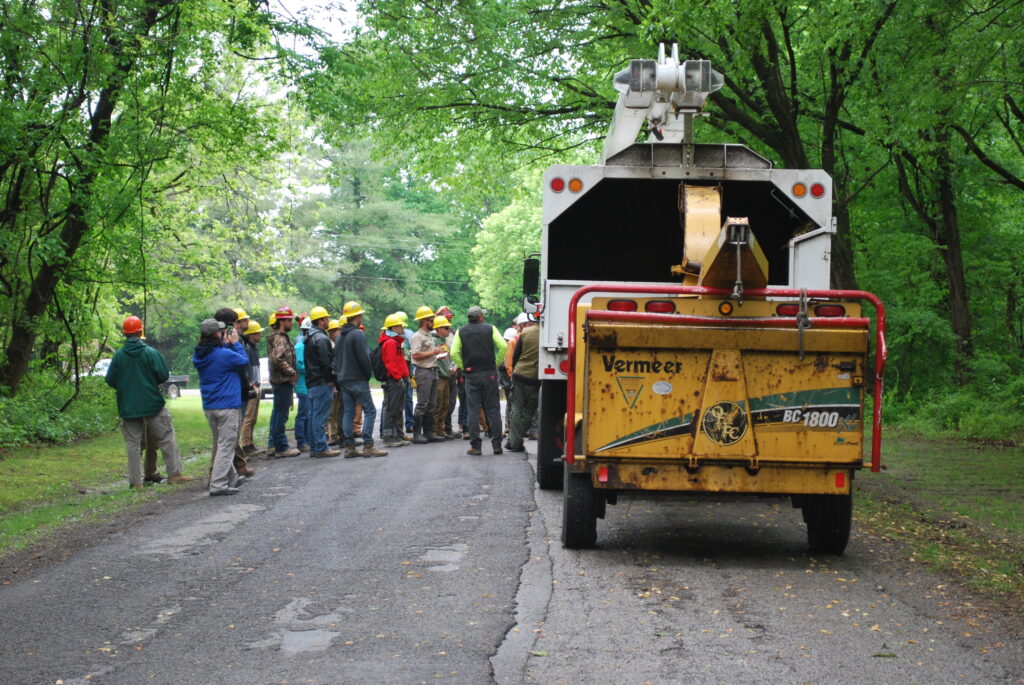
Community Hands-on Training for only $20.00
Felling and Chipper Safety & Ops is being hosted by the City of Bloomington
Date: August 18th, 2023
Time: 7:30am to 3:30pm (30 Minutes lunch)
Location: 1813 Springfield Rd, Bloomington
*CEU’s Available: 7
**Please bring a bag lunch
Made Possible with Grant money from the Illinois DNR
The IAA is offering Community “Hands-on” training, made possible with grant money from the Illinois Department of Natural Resources.

Thank You Illinois Department of Natural Resources!
*All attendees attending the training must bring:


Course Description
Statistics have indicated that tree felling is “the single, most dangerous act” performed by an arborist. This course is designed to drastically reduce the chance of an incident occurring while felling a tree, with heightened safety and situational awareness. The six (6) step precision felling plan is explained and demonstrated in detail. A thorough tree risk assessment is demonstrated to detect any hazards and defects before the felling operation begins. We will explain and demonstrate the “Command and Response” system for Tree Care Operations. The use of non- metallic felling wedges is demonstrated to help prevent “sit-back” and steer the tree into the drop zone. The use of a tag line and using mechanical advantage to safely drop a backward leaning tree is demonstrated. Notch placement inside leaning trees is demonstrated to fell a tree in the designated drop zone. To help prevent “barber chairing”, the plunge (bore) cutting technique is explained and demonstrated on forward leaning trees. Each participant is given the opportunity to fell a tree in a designated “drop zone”, while explaining each step of the felling plan as it is happening. Chainsaw experience is a plus for this course.
Equipment Requirements
Provided Equipment
Gasoline powered chainsaws (18”, 24”, and 28”). Tag lines, felling wedges, axe for driving wedges, mechanical advantage kit w/anchoring system.
Meet on site. Go over a briefing of the day’s course with the group. Explain and demonstrate a thorough “Tree Risk Assessment” of the tree to be felled. Explain and demonstrate the “Command and Response” system. Explain and demonstrate the six (6) step precision felling plan while actually felling a tree. Demonstrate and actually use a 5 to 1 mechanical advantage system to pull over a backward leaning tree. Each participant will then fell a tree while explaining the 6-step felling plan to the group and be graded on the explanation and performance of their felling.
Outcomes
Upon the completion of the Felling course, each participant will gain the knowledge of, or able to perform the following tasks, with safety being the primary objective:
Chipper Safety & Operation goes over pre-trip inspection; proper attachment to the tow vehicle, making sure the safety chains are crossed; proper starting method, how soon to engage the drum/disc after starting; checking the built-in safety features (rubber kickback flap, forward/reverse bar, etc.); proper road cone and traffic sign placement using MUTCD Standards; proper chipper feeding methods; using a ‘push stick’ for shorter sticks/raking’s; proper shut down method.